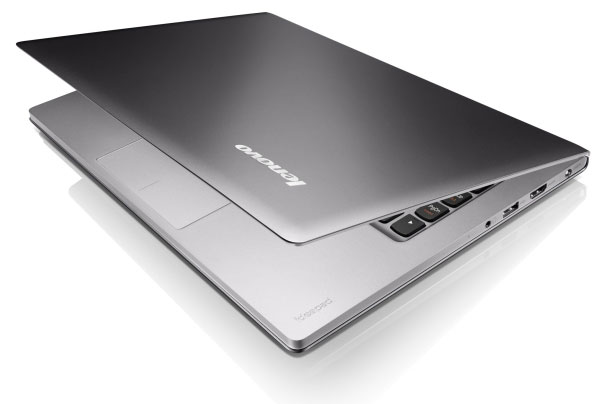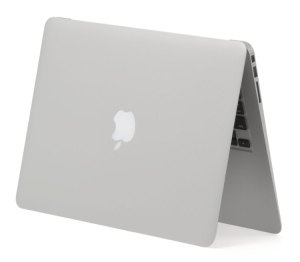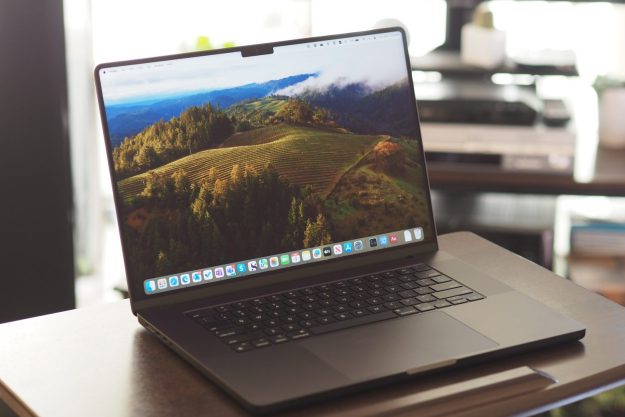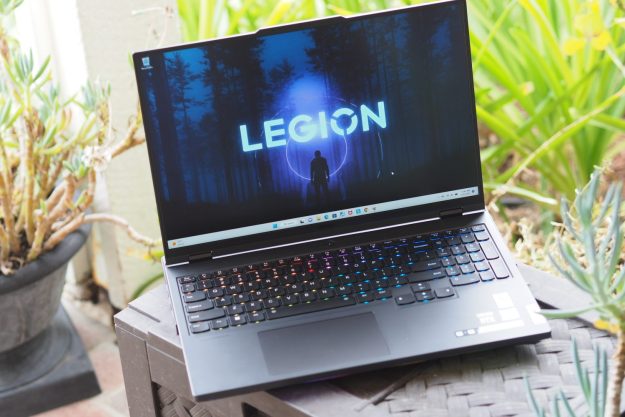
Is your notebook computer dragging you down? Chipmaker Intel is betting heavily that consumers will embrace the company’s so-called “Ultrabook” platform: very thin, very light notebook computers that offer the portability of netbooks without the hefty dive in performance. However, unlike mainstream performance notebooks, Intel promises Ultrabooks won’t cost much, with prices routinely falling under $1,000.
Intel is so confident in the Ultrabook platforms that its betting Ultrabooks will account for 40 percent of consumer notebook sales by the end of next year—that’s up from, well, zero percent right now, so some industry watchers think that’s a bit pie-in-the-sky. As the first Ultrabooks begin to hit the streets, what exactly is an Ultrabook, and is Intel’s vision of Ultrabooks everywhere a little too optimistic?
What is an Ultrabook?
The definition of an “Ultrabook” is slightly hazy: After all, Intel isn’t making these computers, it’s just providing some of the key technology that will enable OEM computer makers — like Asus, Acer, Samsung, Toshiba, and others, initially — to design and build their own. Ultrabooks offered by different PC makers will have different features and capabilities, making Ultrabooks more of a general notebook category like netbooks or ultraportables.
Basic Requirements: Intel has some specs in mind. Ultrabooks should feature designs no more than 21mm (0.83 inches) thick, run on an Intel Core low-voltage processor, offer at least five hours of battery life, and implement Intel “Rapid Start” technology—basically, flash memory embedded on the notebook motherboard to let the computers boot up and wake from hibernation faster than their traditional counterparts. Ultrabooks will also have hardware support for security and anti-theft technologies, including two-factor, hardware-based authentication (although manufacturers will have discretion about implementing those features). Ideally, Intel wants Ultrabooks to cost under $1,000; the company believes that’s the sweet spot for “no-compromise” notebook pricing.
That’s about it: Intel hasn’t laid out any requirements for display size or type (full HD? touch screens?), peripherals and I/O (USB 3.0? Thunderbolt?), storage (SSDs? Traditional hard drives? Both?), media support (SD cards?), expansion, or optical drives (but at 21mm thickness or less…don’t bet on them). Connectivity is also omitted, although it’s a good bet any Ultrabook will offer 802.11n Wi-Fi and Bluetooth at least as an option. Given Ultrabooks’ physical constraints, Intel is telling people to expect they shouldn’t expect to be able to remove and replace the notebooks’ batteries, which may be a distinct downside for long-haul travelers.

Ultrabooks in 2012: The second generation of Ultrabooks will be based on Intel’s forthcoming “Ivy Bridge” processors. Ivy Bridge chips will be built using Intel’s 22nm process technology and, hence, consume even less power than their Sandy Bridge forerunners. Intel also expects Ivy Bridge will enable computer makers to roll in high-performance connectivity like USB 3.0 and Thunderbolt into Ultrabooks. Ivy Bridge chips should be available to computer makers in first half of 2012.
At some point, Intel envisions Ultrabooks sporting touchscreens, making the devices capable of tablet-like experiences—particularly if they feature pivotable screens like today’s convertible tablet notebooks. Industry watchers generally expect the first touchscreen-enabled Ultrabooks will launch about the same time Microsoft launched Windows 8—with it’s slick new multitouch-enabled Metro interface. Microsoft hasn’t announced a release date for Windows 8, but industry watchers expect it in the second half of 2012.
Ultrabooks in 2013: The third generation of Ultrabooks will be based on yet-another iteration of Intel’s low-voltage processors, currently codenamed Haswell. Haswell CPUs will use the 22nm process and consume less power (10 to 20 watts rather than the 35 watts of Ivy Bridge) and will enable computer makers to create “insanely sleek” systems. Haswell processors are expected to be launched roughly a year after Ivy Bridge, so third-generation Ultrabooks might start reaching consumers by mid-2013. Eventually, Intel will shrink the Haswell CPUs from 22nm to a 14nm process — those chips will be dubbed Broadwell. That might happen by the end of 2013.
Aren’t there already super-thin notebooks?
There are already super-thin notebooks on the market, most notably the MacBook Air, which Apple launched all the way back in early 2008 — yes, almost four years ago. Other PC makers have tried to compete with the MacBook Air’s form factor, but have largely failed: Dell’s ultrathin Adamos and HP’s Envy 13 didn’t stand up, although everyone from Sony to Samsung to Lenovo to Acer are also in the mix.

Not according to Intel, since current MacBook Airs don’t implement Rapid Start technology. Similarly, current super-slim PC notebooks like the Samsung Series 9, and the (discontinued) Toshiba Satellite T235-S1350 and HP Pavilion dm3t don’t qualify either, either because they omit Rapid Start, use the wrong processors, are are just too dang expensive.
The potential value of Ultrabooks
Intel believes Ultrabooks will resonate with consumers because they will offer an ideal mix of portability and computing power. Ultrabooks will defeat netbooks because they’ll offer greater computing power, letting users run modern applications at full speed. Similarly, Intel is betting Ultrabooks will defeat tablet computers because they are full-fledged computers: users will be able to run their expected desktop applications — word processors, spreadsheets, Web browsers, games, and whatnot — without the compromises of tablets. Plus, Ultrabooks will likely offer more screen resolution, a real keyboard, and more options than tablets. Ultrabooks may not be able to stand up to dedicated gaming rigs, but the DirectX10.1 support built into Intel HD graphics will let ultrabook users at least get a good taste of most games, plus handle into high-definition video. And, of course, almost all notebook users value lightweight designs.
However, the key success point for Ultrabooks may be responsiveness: Rapid Start technology combined with second-generation Intel Core processors ought to make Ultrabooks feel considerably snappier than traditional notebooks. Done right, Ultrabooks will wake from sleep and be ready to go almost instantly, enabling users to check email, connect to the Web, transfer data, or make key changes to documents without having to wait for the system to get its house in order. That can be a huge advantage, particular for users who’s computer use isn’t easy to predict.
The potential pitfalls of Ultrabooks
If Ultrabooks have all these points going for them, what’s to prevent them from capturing 40 percent of the notebook market next year?
The first obstacle may be price. Although Asus and Acer are expected to jump out of the gate with low-end Ultrabook models priced a bit under $1,000, most of the first generation of Ultrabooks are more likely to land between $1,200 and $1,500. And, as neat as it is to have a super-thin notebook, plenty of customers will opt for far less-expensive traditional notebooks instead. As computer makers ramp up production and refine their Ultrabook designs, prices will eventually come down, but the same is true for traditional notebooks.

The second obstacle may be quick obsolescence—at least for the first generation. Some major PC makers, like Sony, Dell, and perhaps even HP, are expected to wait until mid-2012 and Intel’s forthcoming Ivy Bridge processors before launching their first Ultrabooks. That means the first generation of Ultrabooks (based on existing Sandy Bridge processors) will have a market window of just six months: By mid-2012, they’ll be obsolete. Computer makers may find it difficult to sell businesses and consumers on a brand new super-cool technology platform that’ll be supplanted in a few months’ time. If customers wait for Ivy Bridge Ultrabooks, that means fewer first-generation Ultrabooks will be sold, and that makes it less likely Intel will reach that 40 percent goal.
A third consideration is what customers will be giving up for an Ultrabook. There are distinct segments of the notebook market that value portability above all else: Business travelers and students in particular have long favored ultraportable notebooks that are easy to carry. On their own, Ultrabooks definitely meet anyone’s requirements on weight and portability, and will outperform traditional ultraportables. However, with battery life starting at five hours, many users will still be carrying around power adapters to get through their days. Traditional ultraportables and netbooks will still handle day-to-day stuff and run longer, and they’ll probably be cheaper, too. Folks with extreme lightweight needs will almost certainly be lured by tablets. Plus, most Ultrabooks won’t have swappable batteries, so if customers need more than five hours away from an outlet… too bad.
Ultrabook customers will also have to consider whether giving up screen real estate and optical drives are worthwhile compromises. At least initially, Ultrabooks will likely feature screens ranging from 11.6 to 13.3 inches. Although there’s some wiggle room with native resolution, Intel’s pressure to keep price tags low means most of those screens will top out at 1,366 by 768 pixels, especially in first-generation units. It’s also highly unlikely UItrabooks will have integrated optical drives: they’re too big, too heavy, and almost impossible to manage in that 21mm of depth. Users will certainly be able to connect external optical drives as peripherals, but for folks who need a drive more than once in a blue moon, that really reduces portability.
However, many Ultrabook customers may not care: They’ll purchase their software online, purchase or stream video via broadband, and purchase or rent games and other content online. Apple’s MacBook Airs have never included an optical drive, and the company has even dropped optical drives from its desktop Mac minis. Ultraportable makers have long omitted optical drives from their system, opting to offer external drives as options. Plainly, many computer users are ready to part with CDs and DVDs the same way they bid adieu to floppies over a decade ago.
Upshot
At least initially, Ultrabooks seem destined to appeal mainly to users looking for high-performance ultraportable notebooks: Ultrabooks may be ideal for some, but folks who need the longest possible battery life, discrete graphics performance, or reasonable screen real estate will have to look elswhere. Sales of first-generation Ultrabooks will almost certainly be constained, meaning that if Intel is hoping to have an Ultrabook holiday hit on its hands, it needs to be looking to the 2012 holiday season.


